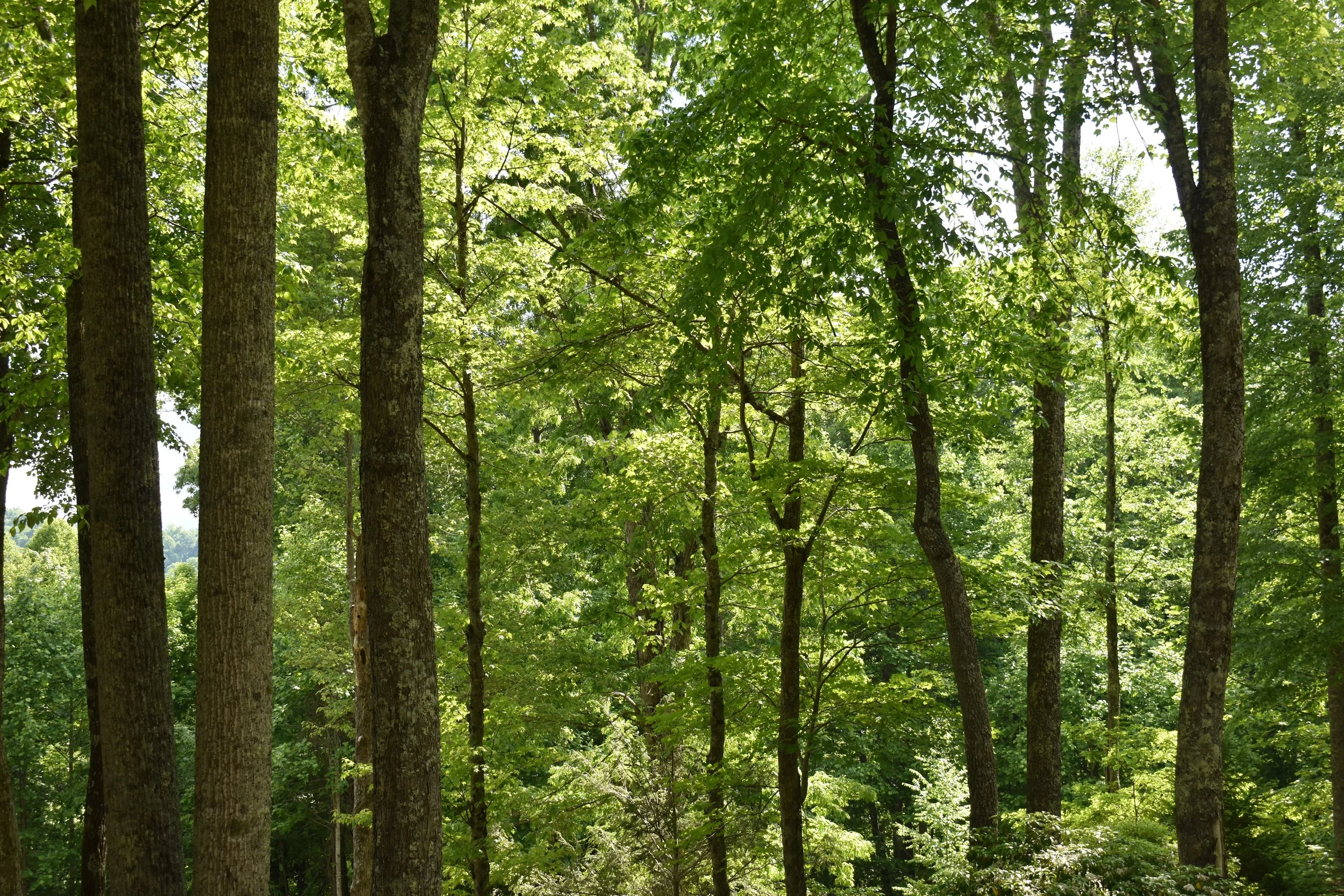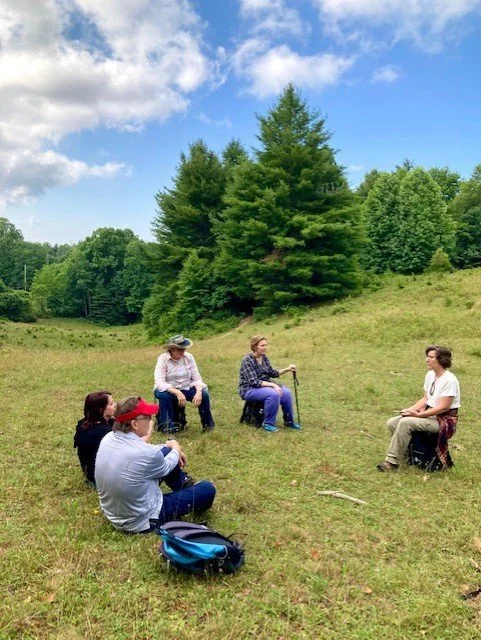
What We Do
Our Mission
Breathe With Trees guides people in the evidence-based process of forest bathing to help them slow down and mindfully breathe in trees’ health-boosting compounds through a series of sensory practices.
How did forest therapy, or forest bathing, get started?
Forest therapy, also known as forest bathing, is an immersion into the health-boosting atmosphere of the forest. The practice began in Japan in the 1980s as a way to offset city dwellers’ work-related stress — the Japanese term “shinrin-yoku” translates to taking in the forest atmosphere. This approach to health and well-being has since been embraced by countries throughout the world as preventative, clinical, and rehabilitation medicine.
Doctors in other countries often prescribe forest therapy and forest bathing for patients suffering from stress and other health issues.
What are the health benefits of forest therapy?
When we spend time in a forest, we breathe in phytoncides, the aromatic compounds given off by trees and plants. These chemicals have been scientifically proven through studies conducted in Asia, Europe, North America and Australia to improve:
Physiological health:
Boost immunity by increasing natural killer cells and anticancer proteins
Reduce stress by lowering cortisol levels
Reduce inflammation
Lower blood pressure and heart rate
Improve sleep
Deactivate the sympathetic nervous system (fight or flight)
Activate the parasympathetic nervous system (rest and digest)
Regulate blood sugar
Mental health:
Improve mood by increasing serotonin
Reduce anxiety and depression
Improve self-esteem
Improve concentration and short-term memory
Increase creativity
Spiritual and social health:
Foster understanding of interdependence
Increase feeling of social connection and empathy
Improve spiritual well-being
How we do it
Breathe With Trees has led small groups on slow walks through the woods and meadows of the North Carolina High Country with gentle invitations to open participants’ senses — sight, sound, touch, smell and taste. This engagement awakens individuals to the present moment.
A forest therapy walk is not so much a hike as it is a saunter of about a mile. During the 2 to 2 ½ -hour experience, participants are invited to notice what is going on around them: perhaps the singing of birds, the aroma of pine, the dance of sunlight.
Like other mindfulness practices, forest therapy encourages the person to decelerate and give the overtaxed, thinking part of the brain a much-needed rest. This time amid the woods also lets a person absorb trees’ aromatic compounds, called phytoncides. These chemicals protect trees from pests and pathogens — and give our immune systems a boost, too.
Breathe With Trees holds a commercial use permit to use trails off the Blue Ridge Parkway, one of our nation’s most visited national parks.
Why do I need a guide?
There are several reasons to use a certified forest therapy guide when forest bathing:
A guide is familiar with the local trails and handles all the logistics, so you can relax into mindfully and peacefully engaging your senses.
Much like a yoga instructor, a guide can help you go deeper in sensory meditations than you might on your own.
A guided forest walk brings you in community with others also seeking the health benefits the forest provides. Sharing time as a group between meditations can bond participants and open each other’s minds to new or different perspectives.


